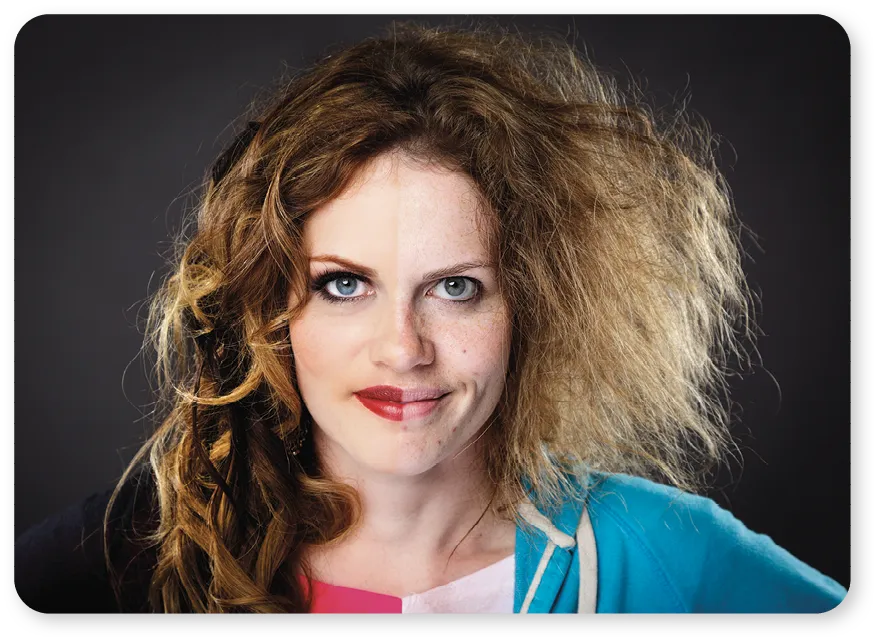Unit 2
Spotlight
Shakespeare unfiltered
Ressource affichée de l'autre côté.
Faites défiler pour voir la suite.
Faites défiler pour voir la suite.
Texte
Listen to Alan Rickman reading “Sonnet 130” .
My mistress'1 eyes are nothing like the sun2;
Coral is far more red than her lips' red;
If snow be white, why then her breasts are dun3;
If hairs be wires4, black wires grow on her head.
I have seen roses damasked5, red and white,
But no such roses see I in her cheeks;
And in some perfumes is there more delight
Than in the breath that from my mistress reeks6.
I love to hear her speak, yet well I know
That music hath a far more pleasing sound;
I grant I never saw a goddess go7;
My mistress, when she walks, treads on the ground.
And yet, by heaven, I think my love as rare8
As any she9 belied10 with false compare.
Coral is far more red than her lips' red;
If snow be white, why then her breasts are dun3;
If hairs be wires4, black wires grow on her head.
I have seen roses damasked5, red and white,
But no such roses see I in her cheeks;
And in some perfumes is there more delight
Than in the breath that from my mistress reeks6.
I love to hear her speak, yet well I know
That music hath a far more pleasing sound;
I grant I never saw a goddess go7;
My mistress, when she walks, treads on the ground.
And yet, by heaven, I think my love as rare8
As any she9 belied10 with false compare.
1. beloved or lady, not necessarily implying a love affair.
2. i.e. her eyes are not bright and shining.
3. dull coloured, or greyish-brown.
4. (gold) wires. Ornamental headdresses often had gold wires, making blonde hair look like gold. Blonde was fashionable then, as it is now, but the mistress has black hair.
5. mixed red and white. Damask roses were a sweet-smelling variety popular at the time.
6. is exhaled. The word was more neutral in Shakespeare's time.
7. walk. You were supposed to be able to recognise a goddess by the way she walked.
8. admirable, extraordinary.
9. woman.
10. misrepresented.
Ressource affichée de l'autre côté.
Faites défiler pour voir la suite.
Faites défiler pour voir la suite.


Ressource affichée de l'autre côté.
Faites défiler pour voir la suite.
Faites défiler pour voir la suite.
William Shakespeaг's
sonnets, written in the late
16th century, are among
the most famous poems in
English literature. Several
are dedicated to a “Dark
Lady” whose mysterious
identity has been a subject
of much debate.
Ressource affichée de l'autre côté.
Faites défiler pour voir la suite.
Faites défiler pour voir la suite.
Path A
A2+
1-A
Who is Shakespeare describing in this sonnet?
2-A
What parts of her body and person does he
mention, and what does he compare each one to?
3-A
Is she described as beautiful? Pick out words to
justify your answer.
Ressource affichée de l'autre côté.
Faites défiler pour voir la suite.
Faites défiler pour voir la suite.
Path B
B1+
1-B
How does the poet describe his mistress
compared to idealised standards of beauty?
2-B
Pick out lines showing which representation
the poet prefers (realistic or idealised).
3-B
What does this sonnet say about true love?
Ressource affichée de l'autre côté.
Faites défiler pour voir la suite.
Faites défiler pour voir la suite.
Let's talk this out!
4
Why does Shakespeare describe his mistress realistically instead of making her seem perfect?
5
How is humour used in the sonnet?
6
What vision of beauty does the sonnet defend or denounce? How can you connect it to the picture illustrating it?
Ressource affichée de l'autre côté.
Faites défiler pour voir la suite.
Faites défiler pour voir la suite.
Beauty beyond the surface
Write a short description of a person, object, or place that challenges traditional beauty standards. Use playful language to highlight features that are often overlooked or considered “imperfect”. Focus on how these qualities make the subject unique and beautiful in their own way.
Write a short description of a person, object, or place that challenges traditional beauty standards. Use playful language to highlight features that are often overlooked or considered “imperfect”. Focus on how these qualities make the subject unique and beautiful in their own way.
Une erreur sur la page ? Une idée à proposer ?
Nos manuels sont collaboratifs, n'hésitez pas à nous en faire part.
j'ai une idée !
Oups, une coquille
